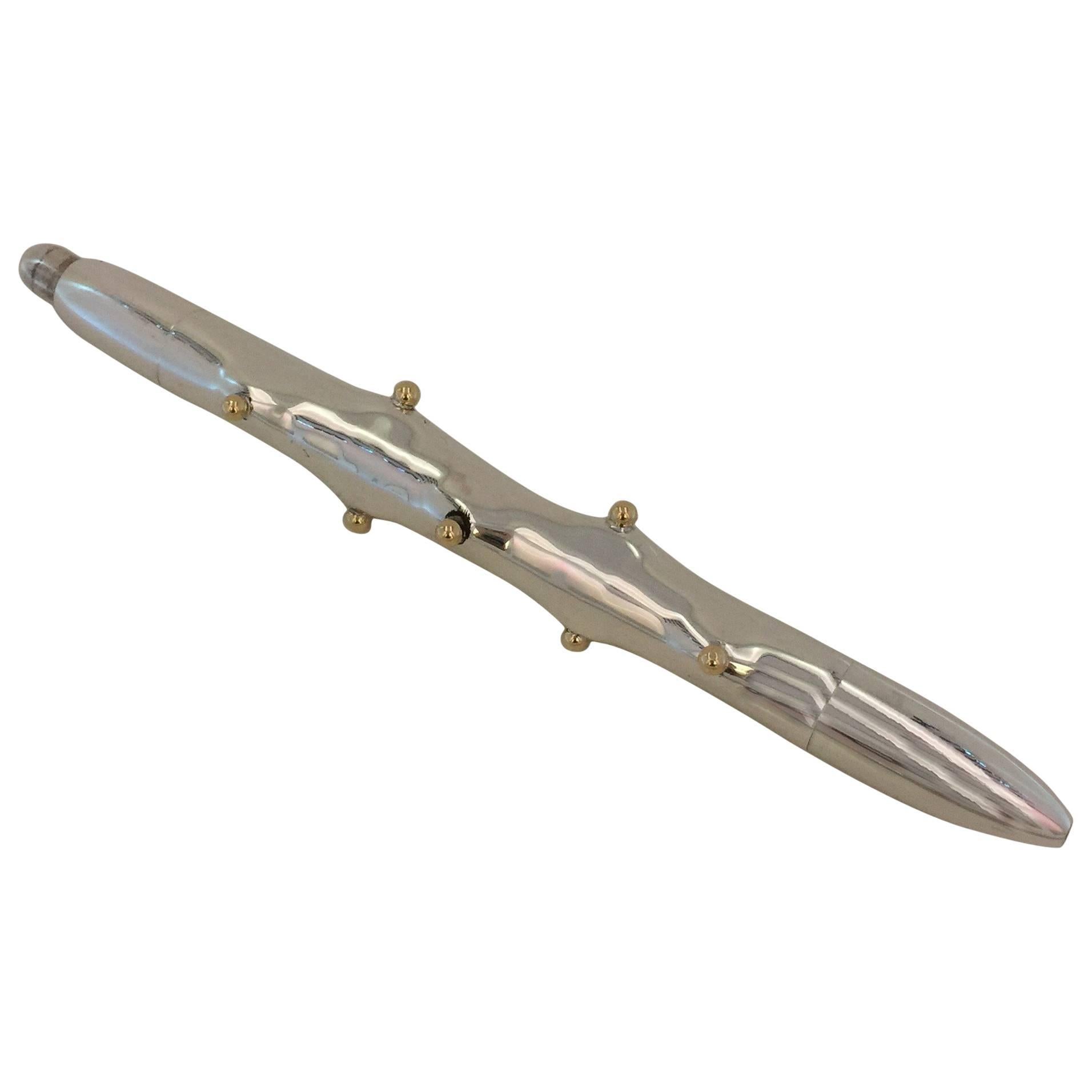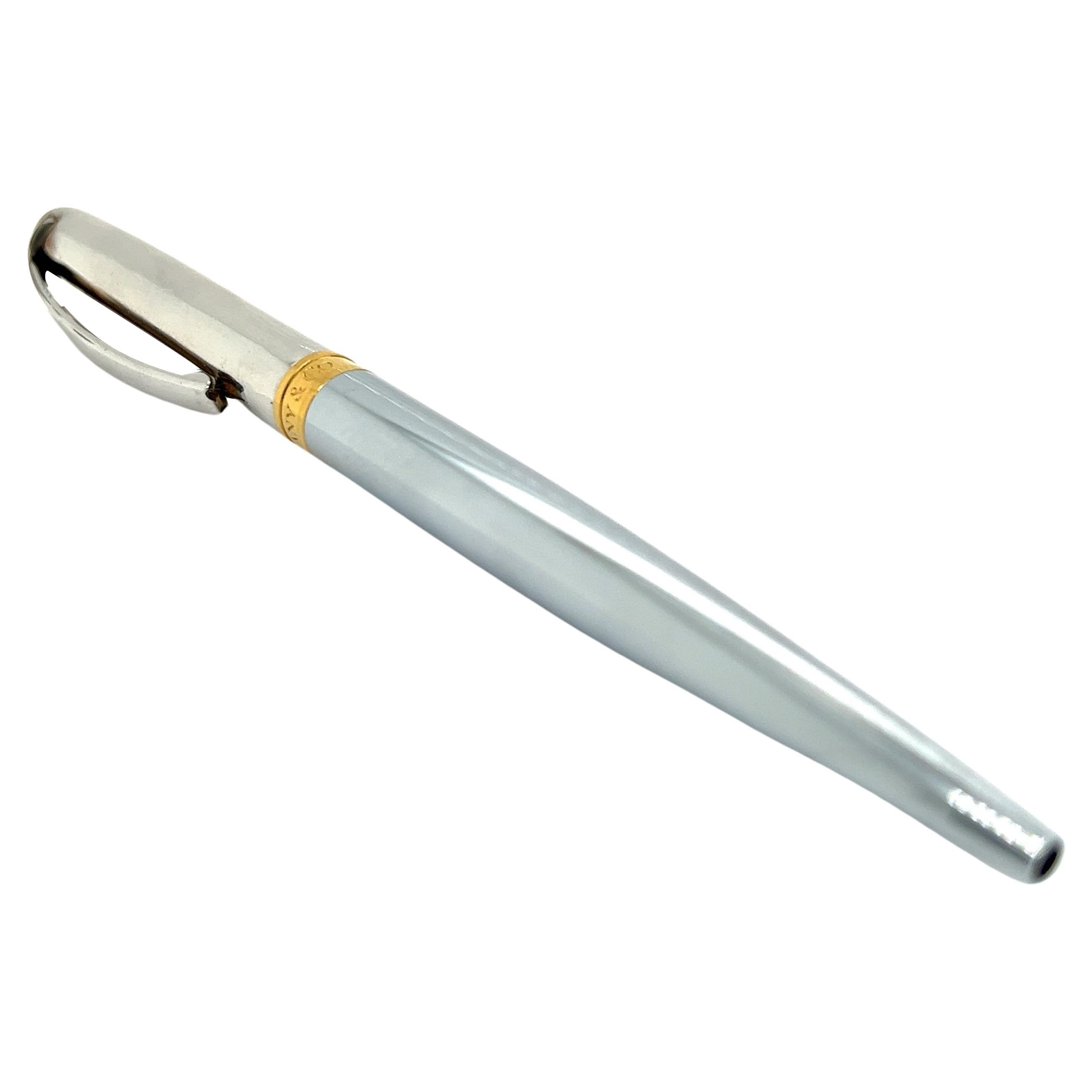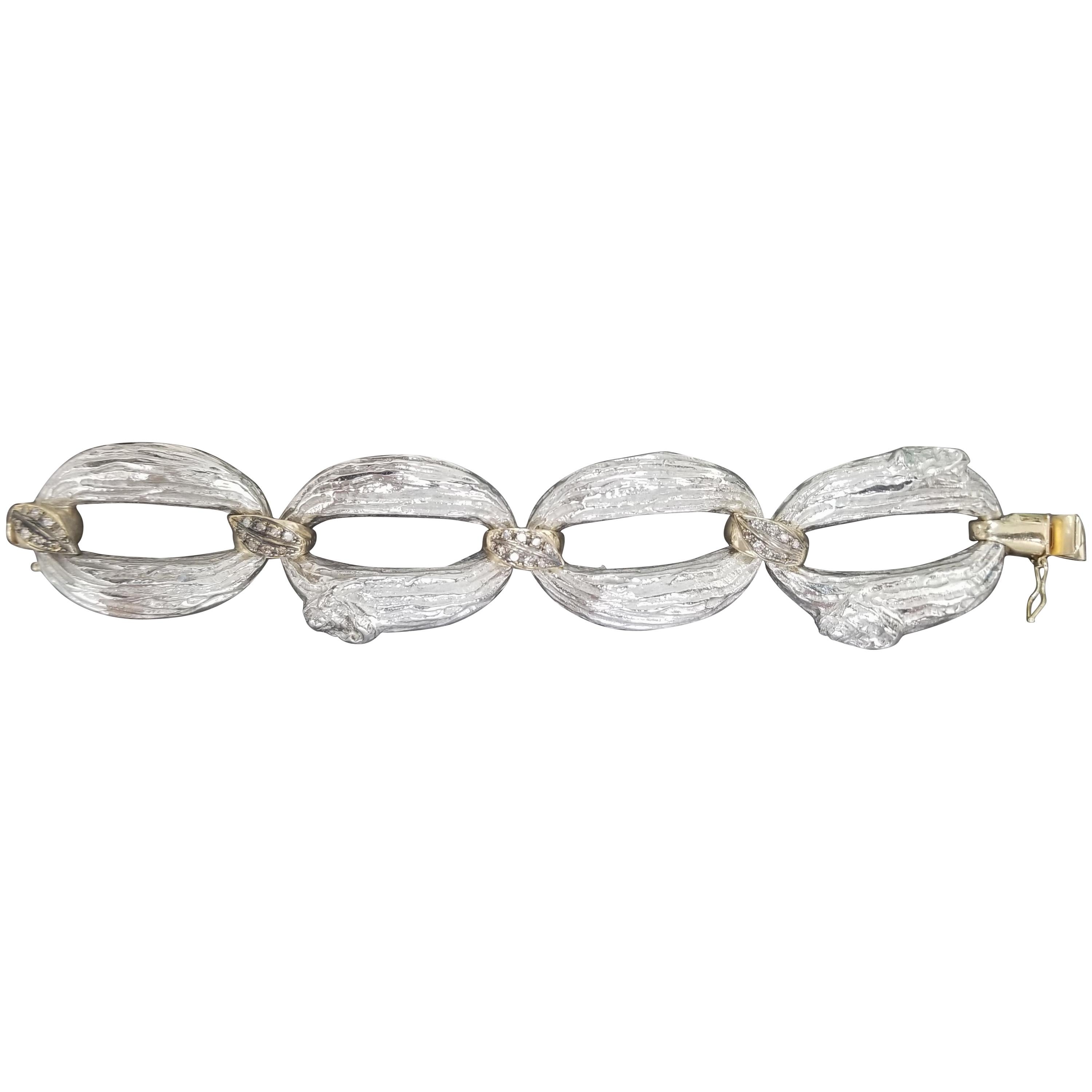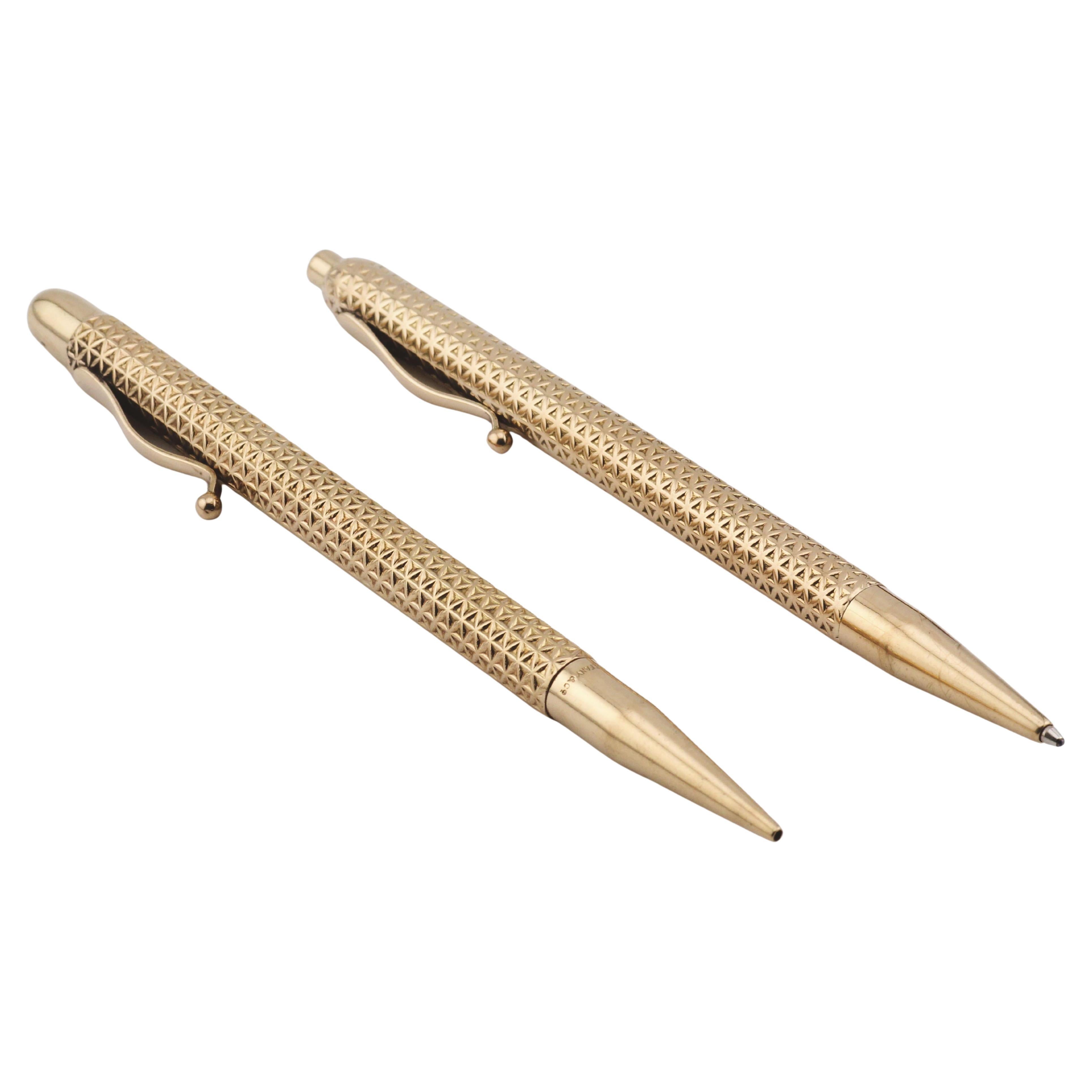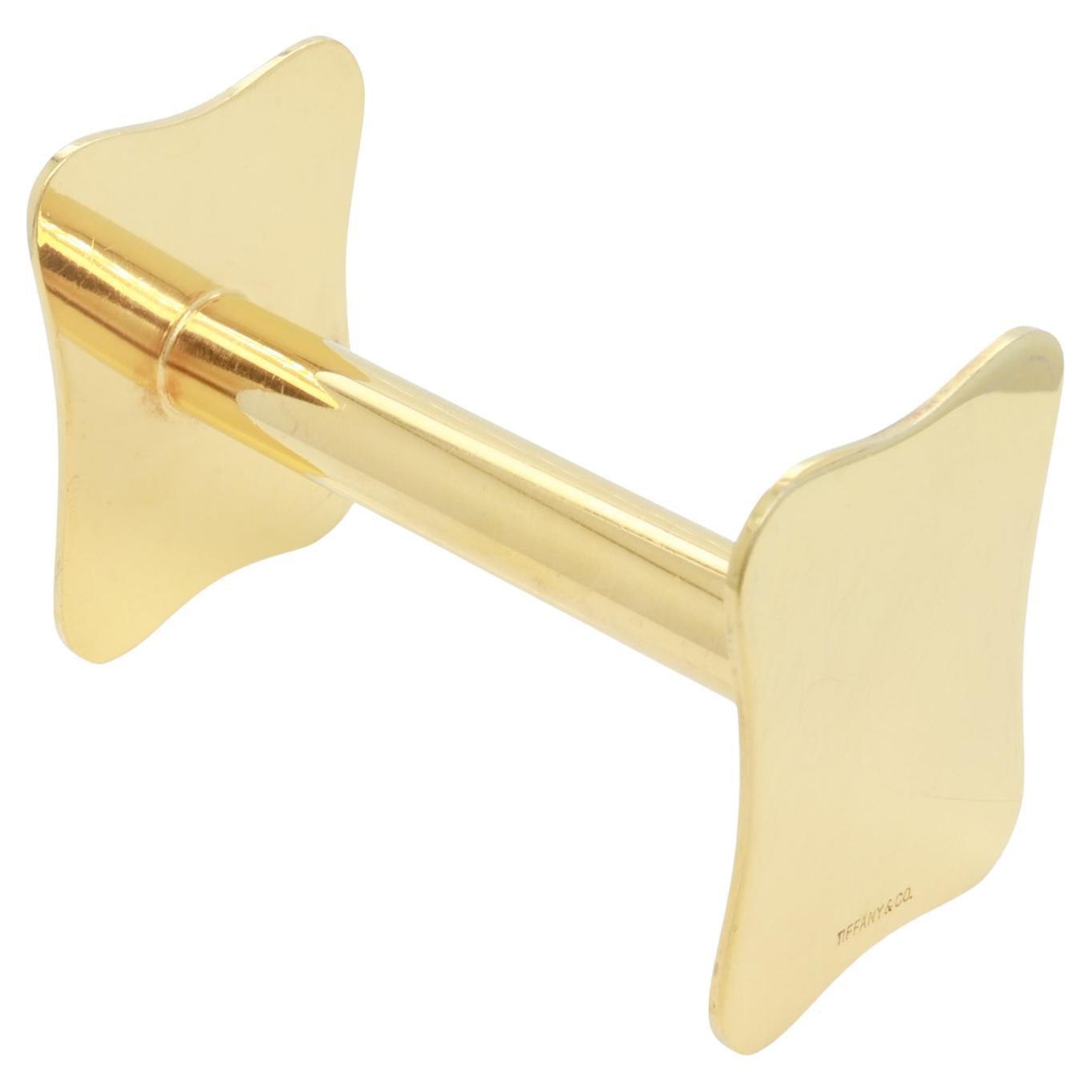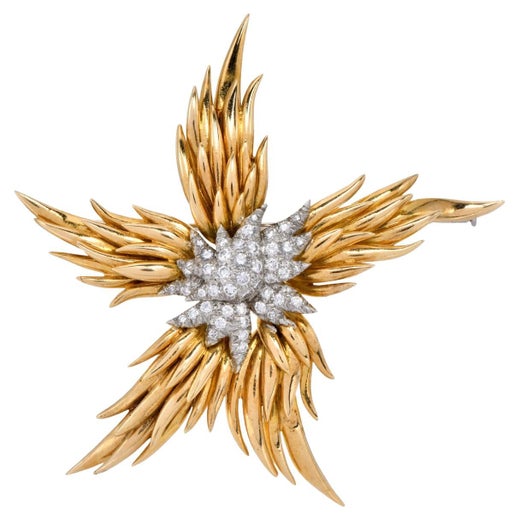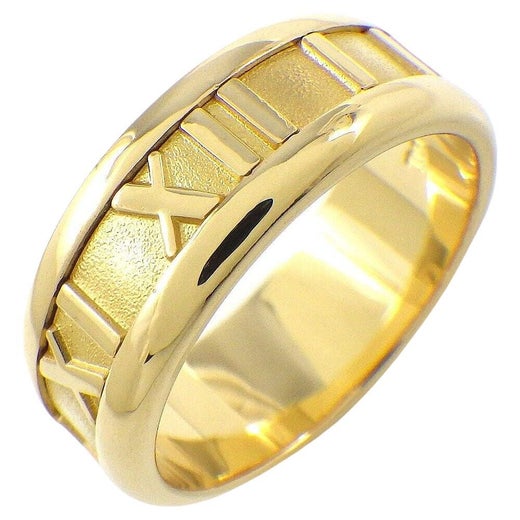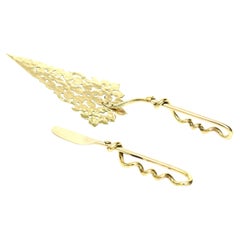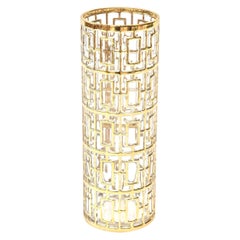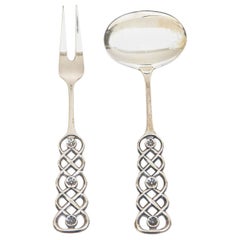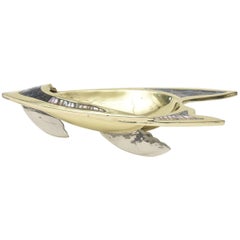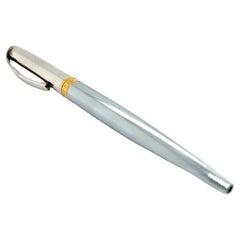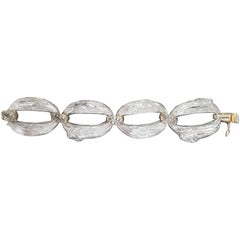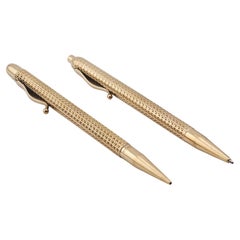Vintage Tiffany & Co. Sterling Silver and 18-Karat Gold Pen by Jean Schlumberger
About the Item
- Creator:Jean Schlumberger (Designer),Tiffany & Co. (Manufacturer)
- Dimensions:Height: 1 in (2.54 cm)Width: 8 in (20.32 cm)Depth: 1.5 in (3.81 cm)
- Style:Organic Modern (Of the Period)
- Materials and Techniques:
- Place of Origin:
- Period:
- Date of Manufacture:1970s
- Condition:Wear consistent with age and use. In very great vintage working condition.
- Seller Location:North Miami, FL
- Reference Number:1stDibs: LU809814490682
Jean Schlumberger
Jewelry designer Jean Schlumberger once said that he strived to “make everything look as if it were growing, uneven, at random, organic, in motion.” His jewels interpreted the vitality of the natural world with lively designs that included a moonstone-topped jellyfish brooch with sapphire tentacles exuding a watery shimmer and a ring encrusted with a burst of diamonds that “bloomed” like a flower bud.
A self-taught jeweler, Schlumberger’s mastery of color as well as his expertise as a draftsman brought his fantastic ideas to life. Born to a leading textile manufacturing family in Alsace, France, Schlumberger took to drawing as a child and showed promise as an artist, but his parents instead sent him to study banking in Berlin in the 1930s. Uninspired, he departed for Paris and began creating buttons for Italian fashion designer Elsa Schiaparelli, who also commissioned him for costume jewelry.
One of Schlumberger’s early pieces — a cigarette lighter in the form of a fish whose head opened to reveal the flame — demonstrated his skill for capturing the vivacity of nature in precious metal. The designer’s imaginative jewelry was in contrast to popular geometric lines of Art Deco, an independent vision he affirmed in the extravagant 1941 Trophée de Vaillance brooch created for fashion editor Diana Vreeland. An extravagant confection of diamonds, amethyst, rubies and gold, the brooch featured gemstones adorning an intricate intersection of tiny spears and a breastplate over a glittering shield.
After serving in the French army and the Free French forces during World War II — and surviving the Battle of Dunkirk — Schlumberger left war-torn Europe for New York and in 1946 established a jewelry salon with Nicolas Bongard. There, his vibrant work caught the eye of Tiffany & Co. After joining the American luxury jewelry house in 1956, he soon had his own studio on the mezzanine of Tiffany’s Fifth Avenue store that he accessed by a private elevator. In his workshop, Schlumberger used a rainbow of gemstones, gold and diamonds to create some of the company’s most beguiling designs.
From striking earrings shaped like soaring wings to diamond birds perched on glittering gemstones, each of Schlumberger’s Tiffany designs dazzled. His supporters included Bunny Mellon, whose love for horticulture inspired commissions such as the Jasmine necklace with diamond blossoms flowering from a garland of colored sapphires, and Jacqueline Kennedy, who wore his Croisillon bracelets so often they became known as “Jackie bracelets.” Schlumberger retired from Tiffany in the late 1970s, but decades after his designs were introduced many of his popular pieces remain in production.
On 1stDibs, find an extraordinary range of vintage Jean Schlumberger jewelry today.
Tiffany & Co.
Tiffany & Co. is one of the most prominent purveyors of luxury goods in the United States, and has long been an important arbiter of style in the design of diamond engagement rings. A young Franklin Delano Roosevelt proposed to his future wife, Eleanor, with a Tiffany ring in 1904. Vanderbilts, Whitneys, Astors and members of the Russian imperial family all wore Tiffany & Co. jewelry. And Jacqueline Kennedy Onassis preferred Tiffany china for state dinners at the White House.
Although synonymous with luxury today, the firm started out rather modestly. Charles Lewis Tiffany and John B. Young founded it in Connecticut as a “stationery and fancy goods emporium” in 1837, at a time when European imports still dominated the nascent American luxury market. In 1853, Charles Tiffany — who in 1845 had launched the company’s famed catalog, the Blue Book, and with it, the firm’s signature robin’s-egg blue, which he chose for the cover — shifted the focus to fine jewelry.
In 1868, Tiffany & Co. gained international recognition when it became the first U.S. firm to win an award for excellence in silverware at the Exposition Universelle in Paris. From then on, it belonged to the pantheon of American luxury brands.
At the start of the Gilded Age, in 1870, Tiffany & Co. opened its flagship store, described as a "palace of jewels" by the New York Times, at 15 Union Square West in Manhattan. Throughout this period, its designs for silver tableware, ceremonial silver, flatware and jewelry were highly sought-after indicators of status and taste. They also won the firm numerous accolades, including the grand prize for silverware at the Paris Exposition of 1878. Among the firm’s glittering creations from this time are masterworks of Art Nouveau jewelry, such as this delicate aquamarine necklace and this lavish plique-à-jour peridot and gold necklace, both circa 1900.
When Charles Lewis Tiffany died, in 1902, his son Louis Comfort Tiffany became the firm’s design director. Under his leadership, the Tiffany silver studio was a de facto design school for apprentice silversmiths, who worked alongside head artisan Edward C. Moore. The firm produced distinctive objects inspired by Japanese art and design, North American plants and flowers, and Native American patterns and crafts, adding aesthetic diversity to Tiffany & Co.’s distinguished repertoire.
Tiffany is also closely associated with diamonds, even lending its name to one particularly rare and exceptional yellow stone. The firm bought the Tiffany diamond in its raw state from the Kimberley mines of South Africa in 1878. Cut to create a 128.54-carat gem with an unprecedented 82 facets, it is one of the most spectacular examples of a yellow diamond in the world.
In a broader sense, Tiffany & Co. helped put diamonds on the map in 1886 by introducing the American marketplace to the solitaire diamond design, which is still among the most popular engagement-ring styles. The trademark Tiffany® Setting raises the stone above the band on six prongs, allowing its facets to catch the light. A lovely recent example is this circa-2000 platinum engagement ring. Displaying a different design and aesthetic (but equally chic) is this exquisite diamond and ruby ring from the 1930s.
Find Tiffany & Co. jewelry, serveware and decorative objects for sale on 1stDibs.
- ShippingRetrieving quote...Shipping from: North Miami, FL
- Return Policy
More From This Seller
View AllAntique 1880s American Modern Serving Pieces
Brass
Vintage 1960s American Mid-Century Modern Glass
Gold Plate
Vintage 1950s Norwegian Mid-Century Modern Sterling Silver
Sterling Silver
Vintage 1950s Mexican Mid-Century Modern Decorative Bowls
Silver Plate, Brass
1990s French Modern Barware
Brass, Chrome
Vintage 1930s American Art Deco Decorative Boxes
Silver Plate, Bronze
You May Also Like
Mid-20th Century American More Desk Accessories
18k Gold, Silver
1990s American More Jewelry
Gold Plate, Sterling Silver
2010s American Arts and Crafts Link Bracelets
Brown Diamond, 14k Gold, Silver
20th Century Desk Accessories
Gold, 14k Gold, Yellow Gold
1990s Bangles
18k Gold
Early 20th Century American Retro Flatware and Serving Pieces
Sterling Silver, Gilt Metal
Read More
These Jean Schlumberger for Tiffany & Co. Earrings Are Just the Right Amount of Bold
Someone wanted to “modernize” the Jean Schlumberger for Tiffany & Co. masterworks, but Mahnaz Collection came to their rescue. Here, the dealer explains precisely why they’re such an extraordinary find.
Jean Schlumberger Is Now Beloved by Rappers, Movie Stars and Style Setters Galore
The late jewelry designer's work, including his famous creations for Tiffany & Co., resonate with a new generation.
